Watch: We drilled a hole in a dam to help restore a Blue Ribbon fishery in Utah
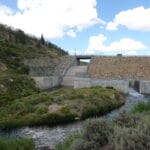
New TU film gives a case study of how TU is leasing water rights to benefit rural communities and restore a former Blue Ribbon trout fishery.

New TU film gives a case study of how TU is leasing water rights to benefit rural communities and restore a former Blue Ribbon trout fishery.

With planting bags slung over their shoulders, gloves and a specialized tree planting tool called a “hoedad” in hand, the Rogue River Tree Army descended toward the river. In just three weeks, 16,000 newly planted trees took root in their new home

This spring and summer, as legislators in Washington D.C. consider infrastructure investments to stimulate the economy amid the coronavirus pandemic, Congress can look to partnerships like that of the Kittitas Reclamation District and Trout Unlimited as evidence of the significant value conservation work brings to communities.
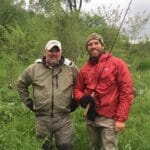
This week, we begin our series on great Trout Unlimited Business members with a look at this conservation success story and destination fishery through the eyes of a great guide, Mike Warren from Trout Buddy Driftless Guides in LaCrosse, WI.
Trout Unlimited is known for its rock-rolling work where we are often found wearing waders and making rivers and streams better for trout and salmon, and of course, anglers. But we also spend plenty of time in our finest attire in the halls of state and federal legislative buildings advocating for smart water policies, protecting public lands and funding allocations to…
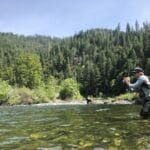
I was caught, checking my phone yet again, in hopes of finding a response to the question that I’d posed hours earlier: an invitation to a woman I recently met to get a drink together.
Abandoned mines are a problem – a big problem. Today, there are some 500,000 abandoned mines across America. Many of these chronically leak heavy metals and other toxic residues into streams and groundwater. In the western U.S., 33,000 abandoned mine sites have degraded the environment, including popular trout streams such as the Animas River in…
Genetic diversity is an important component of population resiliency, providing a varied toolbox fish rely on to adapt to a changing environment. Small, isolated populations inevitably lose genetic variability over time and become more distinctive genetically from other populations. Simply by characterizing genetic patterns within and among populations across a landscape, then, we can glean…
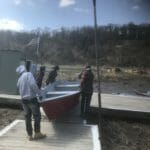
By Chris Wood The other morning, my friend, Brent Fewell, an attorney who worked at the EPA under President George W. Bush, wrote: “Had dinner and a very encouraging conversation last evening with seven prominent GOP Senators who want to make the environment and conservation a greater priority for the GOP, a return to Teddy…
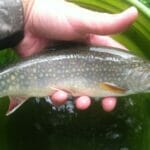
April 28, 2021 FOR IMMEDIATE RELEASE Contacts: Seth Coffman, Trout Unlimited Shenandoah Headwaters Program, seth.coffman@tu.org Mark Taylor, Trout Unlimited eastern communications director, mark.taylor@tu.org ARLINGTON, Va. — Virginia’s water resources will get a boost from nearly $3 million that will help Trout Unlimited launch a partnership project to address aquatic habitat, and water quality concerns in…
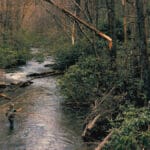
“A Beautiful Mess” premiers this week. Check it out to see why this effort is needed, how the work fits in with TU’s new Priority Waters initiative, and how streams’ trout populations are responding.
FOR IMMEDIATE RELEASE Contacts: Matthew Deitch, Center for Ecosystem Mngmt&Restoration, 510-420-4565 x106, deitch@cemar.org Brock Dolman, Occidental Arts&Ecology Center, 707-874-1557 x206, Brock@oaec.org Kara Heckert, Sotoyome Resource Conservation Dist., 707-569-1448 x104, KHeckert@sotoyomercd.org Lisa Hulette, Gold Ridge Resource Conservation Dist., 707-874-2907, lisa@goldridgercd.org Mary Ann King, Trout Unlimited, 510-649-9987, mking@tu.org Mariska Obedzinski, Univ. of CA Cooperative Extension, 707-565-2621, mobedzinski@ucdavis.edu…
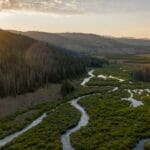
Proposal would invest $369 billion in clean energy and ecosystem resiliency, reform oil & gas leasing on public lands Contacts: Chris Wood, President and CEO, Trout Unlimited, chris.wood@tu.org Steve Moyer, Vice President for Government Affairs, Trout Unlimited, steve.moyer@tu.org Corey Fisher, Public Lands Policy Director, Trout Unlimited, corey.fisher@tu.org ARLINGTON, Va.—New Senate legislation would point the country…
3/29/2007 Sen. Kohl?s Farm Bill program would aid fisheries and stream restoration March 29, 2007 Contact: Dan Wisniewski (608) 698-8680 Laura Hewitt (608) 250-3534 FOR IMMEDIATE RELEASE: Sen. Kohls Farm Bill program would aid fisheries and stream restoration Legislation would provide $60 million for fish and riparian habitat MADISON, Wisc.Trout Unlimited applauded Sen. Herb Kohl,…
Five years of advocacy on behalf of native fish and wild places in the Gila National Forest
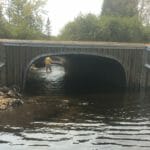
By Laura MacFarland In 2017, Trout Unlimited staff and volunteers helped to reconnect 42 miles of coldwater habitat within the Peshti go River watershed in Northern Wisconsin, as part of TU’s Great Lakes Restoration Program. In collaboration with the Forest Service and the Wisconsin Department of Natural Resources, 10 inadequate culverts were replaced with fish-friendly…
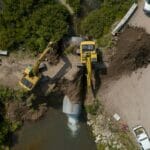
Farm Bill conservation programs actually fund a significant amount of coldwater conservation across the country, and Trout Unlimited leverages several Farm Bill programs to improve and restore coldwater streams for trout, salmon, and people.
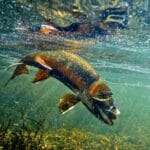
The Appalachian Mountains of Pennsylvania are home to some of the most scenic wild trout fisheries in the eastern United States.
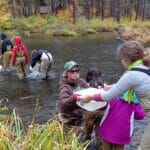
Students have connected to our restoration projects and helped us improve sections of 5 watersheds and 50 river miles for our fish and wildlife. Our goal has been to inspire students to study their local river, appreciate the unique habitat, and empower our youth and families to care for each river now and into the future.
For immediate release 6/4/2020 Contact: Shauna Stephenson shauna.stephenson@tu.org, (307) 757-7861 Legislation to fully fund LWCF and address maintenance backlog gains momentum Senate to vote on Land and Water Conservation Fund, House introduces companion bill (June 4, 2020) WASHINGTON, D.C. – On Thursday, the Senate began consideration of S.3422, the Great American Outdoors Act. Sponsored by Senator Cory Gardner (R-CO), the bill would fully and permanently fund…